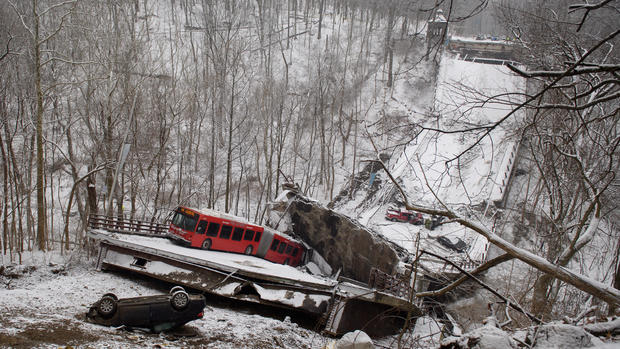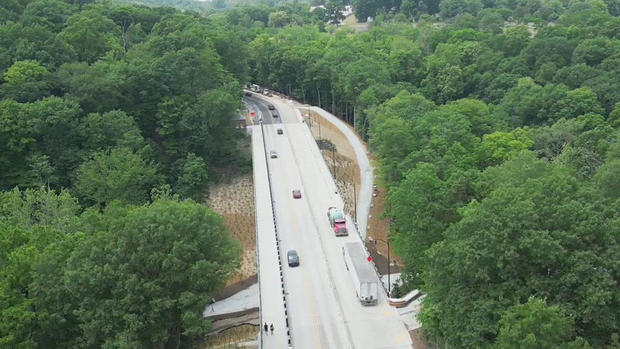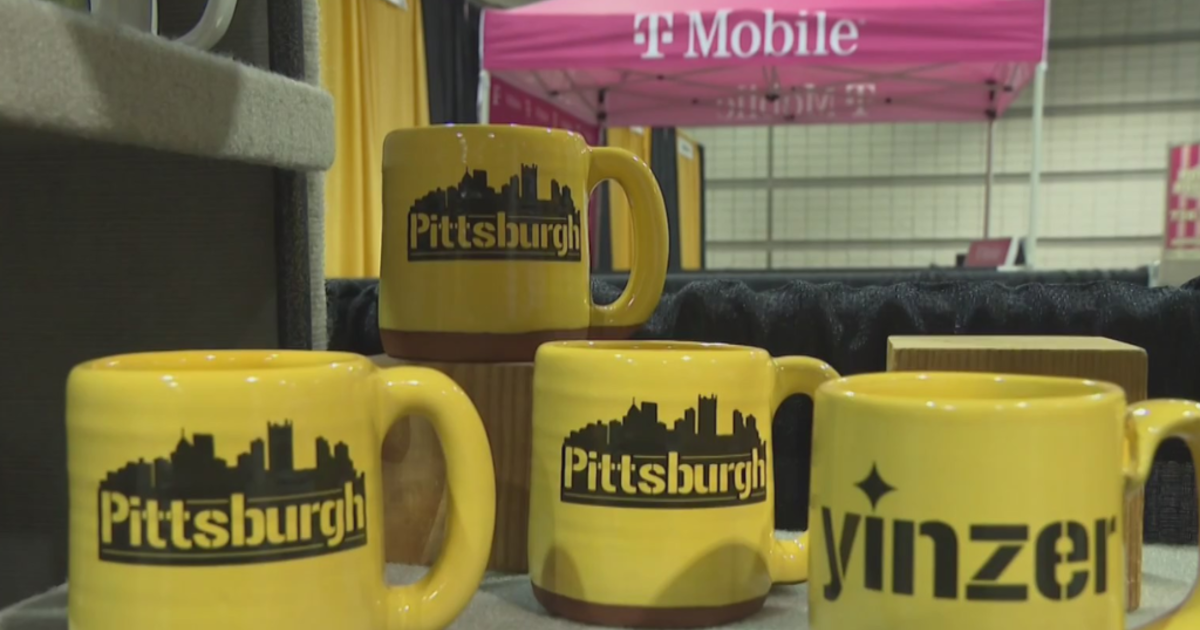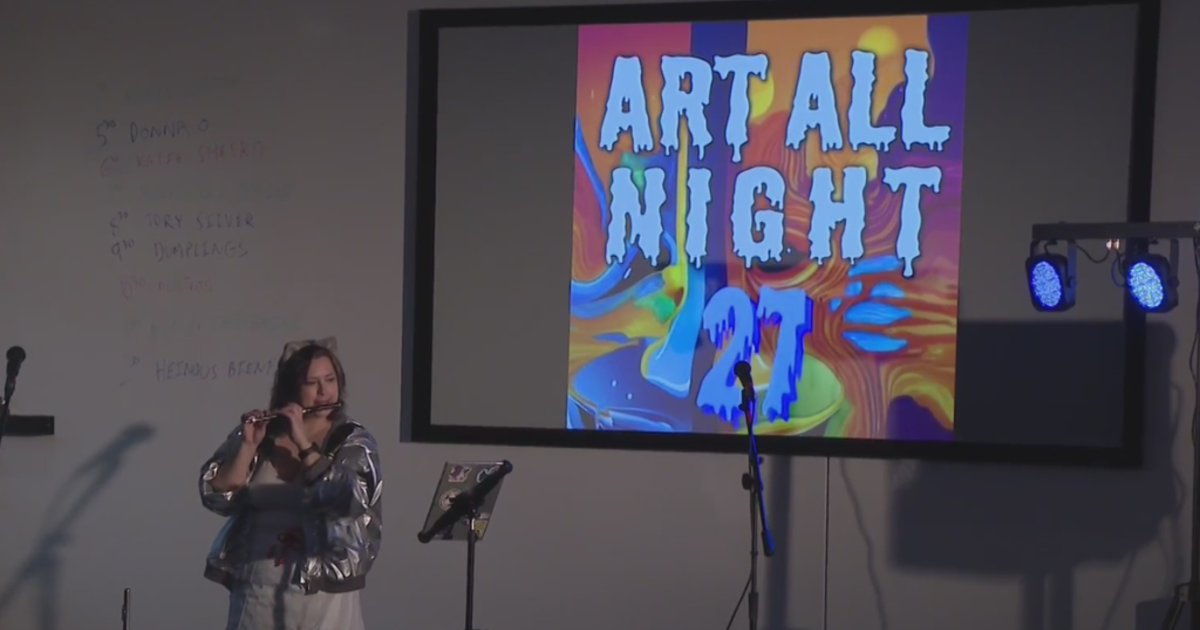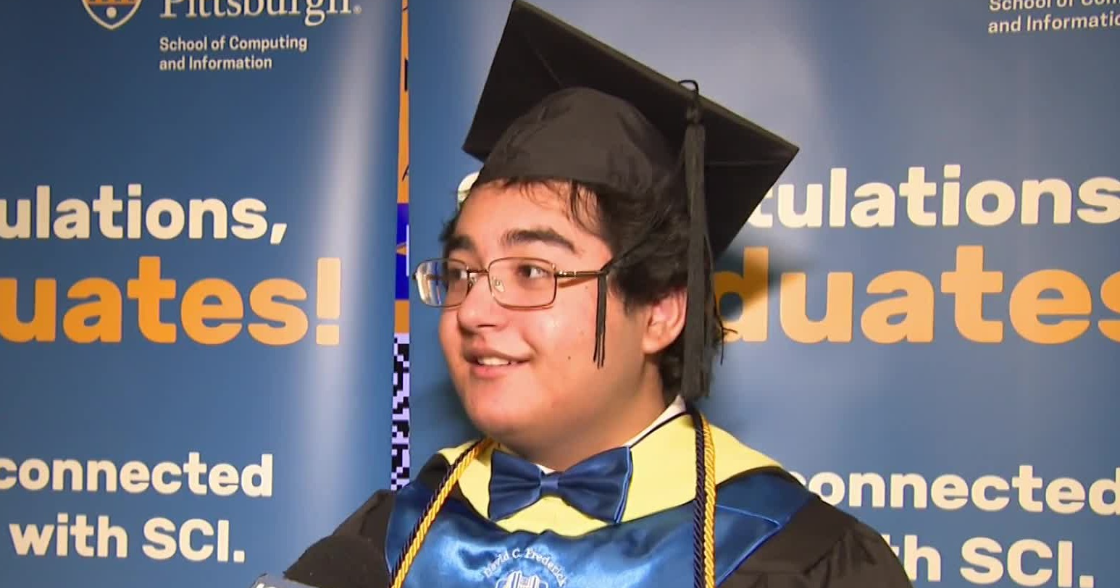NTSB says Fern Hollow Bridge should have been closed years before collapse
PITTSBURGH (KDKA) -- After two years of investigation, the NTSB has determined the city should have closed and repaired the Fern Hollow Bridge more than a decade ago and the collapse should have never happened.
In releasing the devastating findings, NTSB Chair Jennifer Homendy addressed those who were driving across the bridge when it collapsed, saying it could have been prevented.
"We are so sorry you experienced such a terrifying event. As you will hear today, the Fern Hollow Bridge collapse should never have happened. Your injuries both physical and psychological should never have occurred," Homendy said.
Her team of investigators then showed in detail how nearly two decades of the city's neglect and inaction resulted in the severe corrosion of the bridge's main supporting legs, one of which failed and buckled on the bridge's west end, initiating the collapse.
That corrosion was shown in 16 years of city inspection reports, but inspectors deemed the bridge in poor condition, not critical, which would have required its immediate closure and repair. Investigators said that did not happen, but, "had the city of Pittsburgh repaired the legs, the collapse of the Fern Hollow Bridge could have been prevented."
The NTSB further criticized the city for failing in basic maintenance -- ignoring clogged storm sewer drains which allowed water and debris to further corrode the supports, and in 2009, shoring up badly deteriorated cross beams with cables and never attending to the beams themselves.
All the while, the city allowed a weight limit of 27 tons -- far too high, inspectors said, given the thickness of concrete and the weakness of the corroded understory.
Homendy says this is a cautionary tale for deficient bridges across the country.
"Our goal is not to place blame, but to learn from this disaster, to fight for positive safety change so it never happens again," Homendy said.
The collapse happened only days into the Gainey administration and no one in former Mayor Bill Peduto's administration has commented. The report says the city's Department of Mobility and Infrastructure is implementing changes.
Attorneys for victims react to NTSB findings
Attorneys for two men who were badly hurt when the bridge came crashing down said their clients suffered physical and emotional trauma then — and still do now.
Attorney Pete Giglione represents Port Authority bus driver Daryl Luciani, who had two passengers with him when the bridge collapsed. He said the findings confirmed what he already suspected.
"The chair said it during the hearing; this was a completely preventable disaster," Giglione said.
Giglione said the support system's failure due to excessive deterioration over the years and excessive weight confirms his expert's theory on the collapse.
"No matter how many times I read it in the documents myself, the amount of notice that was given to the city about the problems with this bridge was absolutely incredible," he said. "And the fact that really nothing was done in the face of that, it's just mind-boggling to me."
Attorney Jason Matzus' client, Clinton Runco, landed upside down in his car when the bridge came down. The then-75-year-old dentist broke his neck, crushed his sternum and had blood clots in his lungs.
"They made it crystal clear that the city and bridge inspection companies were derelict in their duties and recklessly indifferent to and disregarded a major public safety danger," Matzus said.
The next step is filing complaints. One engineering firm has not been served. Both lawyers expect the case will not get to a jury trial for at least a year, and they expect the engineering firms and city to try and use federal and state laws to keep the unredacted bridge inspection reports, data taken during the collection and the NTSB report out of court.
"Nothing in litigation, high-stakes litigation like this, is easy. Certainly, the city is going to continue to fight as they have been fighting all along," said Matzus.
The collapse of the Fern Hollow Bridge
Early in the morning of Jan. 28, 2022, the 447-foot bridge gave way, collapsing into Frick Park below. Six vehicles, including a Pittsburgh Regional Transit bus, were on the bridge at the time of the collapse.
It was a light morning for commuter traffic, as a 2-hour delay for area schools had been implemented due to the inclement winter weather. Ten people were injured in total, with four of them taken to the hospital. Thankfully, no one was killed.
Hours after the bridge collapsed, President Biden, who was scheduled to be in Pittsburgh on that same day, with plans to discuss infrastructure arrived at the site to survey the damage.
The early investigation into the bridge collapse showed that investigators found corrosion, deterioration and section loss on all four of the bridge's legs from the "continual accumulation of water and debris."
In May, the NTSB urged transportation officials nationwide to examine more than 10,000 other bridges with similar construction to make sure they don't have the same kind of corrosion.
Rebuilding the Fern Hollow Bridge
Within weeks of the collapse, federal officials including President Biden and Transportation Secretary Pete Buttigieg made it a point to expedite the rebuilding of the bridge.
"$25.3 million in federal funds were made available for the project and was able to proceed without coming out of other critical projects in the region, thanks to some flexibility that exists with some of the new funds coming in under the president's Bipartisan Infrastructure Law," said Buttigieg.
Shortly after the collapse, crews moved in with their demolition equipment, initially helping the NTSB with their investigation, and then moving towards the actual demolition of the bridge.
Less than one year after the Fern Hollow Bridge collapsed into Frick Park, the bridge was rebuilt and open to traffic, being fully completed within 18 months.
PennDOT said it worked relentlessly and tirelessly with designers, contractors and the community, saying the new bridge is a clear example of having enough funding for a construction project.
RELATED STORIES:
- Fern Hollow Bridge will open this week, Transportation Secretary Pete Buttigieg confirms
- President Biden returns to Fern Hollow Bridge to talk infrastructure
- Fern Hollow Bridge Collapse: 5th lawsuit set to be filed against city of Pittsburgh
- City of Pittsburgh denies request for Fern Hollow Bridge inspection history documents
- Report finds Fern Hollow Bridge appeared to have had 'major decay' just months before collapse
- NTSB: Bus camera gives information on sequence of Fern Hollow Bridge collapse
- PHOTO GALLERY: Fern Hollow Bridge Collapses In Pittsburgh's Frick Park
